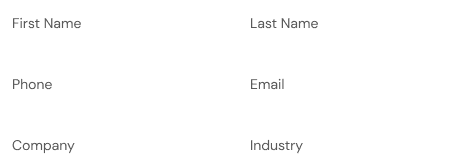
How have you prepared your workplace for the new year?
As we enter a post-pandemic era, the workplace is sure to continue evolving. It’s important to be prepared for the coming changes to ensure that you maintain optimal performance and efficiency within your organisation.
Being unprepared for the future of the workplace can negatively impact your organisation, especially when key changes start directly affecting or disrupting your business and industry. Learning about the incoming trends around the future of work will allow you to leverage these changes to your advantage and take actionable steps in ensuring business continuity.
5 leadership trends for the future of work in 2023
While there are a lot of changes that we can expect to see this year, we’ve shortlisted the top five trends that business leaders and HR managers should keep an eye on.
This will give you a clear idea of the strategies you need to have in place so that you can effectively address these issues.
1. Coping with the increased global talent shortage
The world is currently experiencing a widespread global talent shortage as more organisations require highly specialised in-demand skill sets in their hired talent.
Industries that are significantly impacted by this shortage include:
According to Manpower Group’s global survey, there’s a 75% increase in global talent shortage in 2022, with 3 in 4 employers reporting that it’s difficult to find the talent they need.
- IT and technology
- Wholesale and retail trade
- Manufacturing
- Education, health and government
- Banking and Finance
Conversely, the top five in-demand roles include:
- IT and data
- Sales and marketing
- Operations and logistics
- Manufacturing and production
- Customer service and front office
Finding the right talent in a local pool of candidates can be difficult when there are so many work opportunities available to employees. At the same time, many organisations are facing mass layoffs in an effort to cope with the current economic climate. A dual-sided solution to address this is outsourcing, which enables you to save costs while still hiring and maintaining your top talent.
According to a study by Deloitte, 70% of businesses agree that saving costs is the primary objective of outsourcing, followed by flexibility and speed to market. Outsourcing allows your organisation to be agile and adaptable in the hiring process as you implement a “borderless” hiring solution.
Many organisations have shifted to a remote work model to accommodate international employees, which in turn globalises your operations. Remote work removes the geographic limitations when it comes to finding top candidates while improving employee retention and job satisfaction.
Using an Employer of Record (EOR) can help you in implementing a remote work model, particularly in setting up the right systems and infrastructure to support your organisation and your remote employees.
2. Prioritisation of organisational diversity, equity and inclusion (DEI) efforts
Now more than ever, there’s a growing awareness of the need for diversity and inclusion within the workplace.
Employees expect and demand their organisation to increase diversity, equity and inclusion (DEI) efforts, and it’s crucial for business leaders and HR managers to respond.
A nontraditional work environment can do a lot to boost diversity and inclusivity, particularly in a remote work model. A remote work setup opens up opportunities for employees of marginalised groups, such as women, LGBTQ, people of colour and people with disabilities.
This working model also gives marginalised groups the flexibility and autonomy to perform optimally, allowing them to create a workflow and schedule that suits their needs.
On the end of employers and HR managers, it’s important to ensure that the DEI efforts they’re developing are structural, not just superficial. In a Harvard Business Review article written by Melaku and Winkler, they’ve created a set of questions that business leaders and managers should consider when developing their DEI initiatives:
- Are you providing equitable access to career opportunities?
- Are you promoting a culture of allyship?
- Have you made a public commitment to DEI with external partners?
- How will you measure your progress (or lack thereof)?
Knowing the answers to these questions will help you understand where you are in further improving your DEI efforts.
3. Continued demand for remote work
Employees are becoming more discerning when it comes to their chosen workplace, and more people are choosing work opportunities that give them flexibility, allowing them to work remotely. In response, more organisations are creating remote work opportunities to attract and retain high-performing employees.
In the research conducted by Zippia, the number of fully remote workers grew four times larger. Experts also believe that by 2025, there will be a 417% increase in remote workers, especially since 85% of managers now believe that handling teams of remote workers are the new norm.
You must consider developing a remote work model that aligns with your current operations. Building the right systems and infrastructure for remote workers will help you find and retain talent from all over the world.
This includes familiarising yourself with your employees’ local labour laws, providing them with the appropriate training and benefits and ensuring that you have an efficient payroll system. Partnering with a capable HR provider can support you in this process so that you can easily welcome remote workers into your organisation.
4. Focus on holistic health and wellness in the workplace
There’s a growing awareness and expectation for prioritising holistic wellness and overall well-being in the workplace. Millennial and Gen Z employees are not only prioritising getting a high-paying job, but they’re also looking for companies that can give them the right work-life balance.
HR managers need to make an effort in creating a holistic wellness program for their employees. This allows employers to support their staff in maintaining good overall health so that they continue being happy and fulfilled in their work.
There are different ways that you can incorporate wellness initiatives into your company-wide programmes:
- Increase mental health resources and benefits - Partnering with reputable mental health organisations can give your employees access to the resources they need to take care of their mental well-being.
- Provide courses on financial literacy - Financial stress is known to be one of the top concerns that many employees face. Financial literacy can go a long way in empowering and educating your staff so that they can better manage their finances.
- Elevate basic healthcare benefits - Investing in your employees’ healthcare benefits and packages can ease their worries about any health concerns while increasing their trust and loyalty to your organisation.
5. Balancing employee autonomy with team collaborations
Because there’s a continued increase in remote work, organisations need to balance employee autonomy and team collaboration.
This completely changes the employee experience, so while it can be good to encourage employee independence, managers also need to give opportunities for staff to work together on projects. Utilising project management applications or software can allow your remote employees to create, organise and track individual and team projects.
The workplace will continue to evolve as the year progresses, especially once we start seeing more advancements across different industries. As a business leader, you need to prepare for these changes and ensure that you have the proper measures in place to help your staff and your organisation grow.
Start the year with a bang. Contact us for your HR requirements and we’ll help you take your organisation to the next level.
Jump straight to a key chapter
Spending Too
Much Time
Onboarding?
your remote hiring in the
Philippines, excellently.
Say Goodbye to High Costs!
Request Your Free Consultation Today andSave a Massive 70% on Your Workforce!

Ready to thrive in a remote-first work environment?


